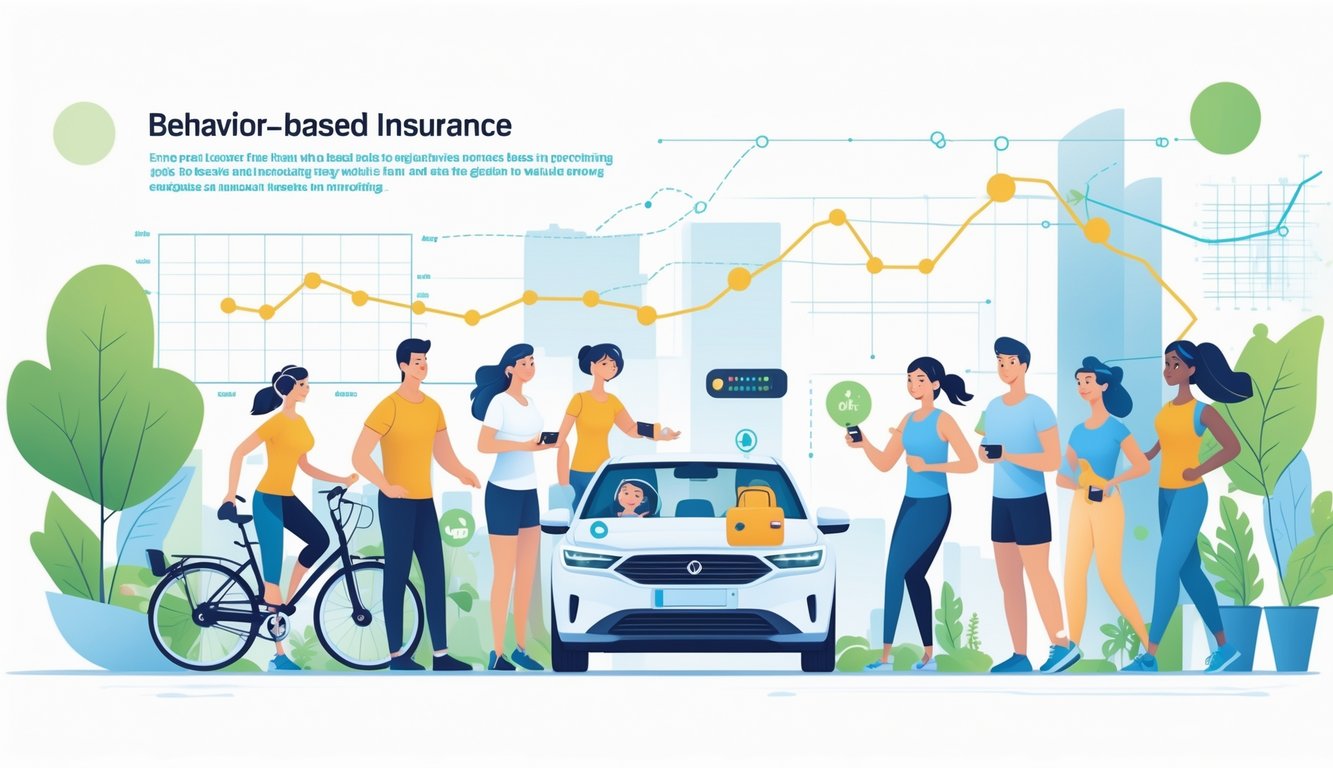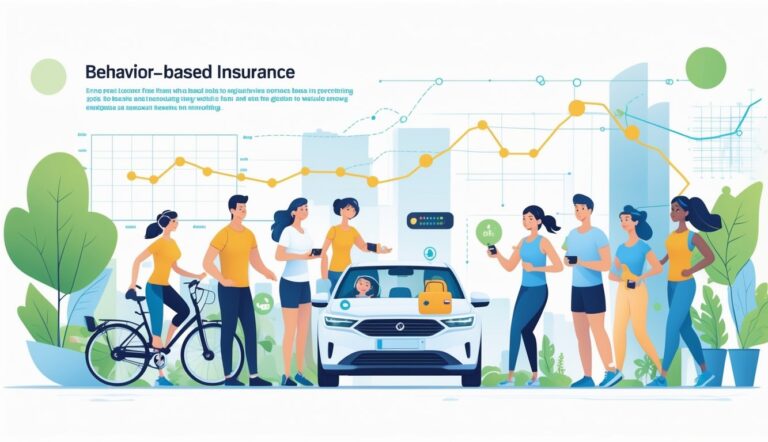Behavior-based insurance looks at the way you drive to set your car insurance rates. If you drive safely—think slower speeds, careful braking, and putting your phone away—you could get rewarded and end up paying only for how well you drive. This method tries to make insurance more personal and what many would call fair, especially compared to the old-school way of doing things.

You can join these programs with apps or gadgets that watch your driving in real time.
Some insurance companies even toss in rewards to nudge you toward less distracted driving, which is good news for everyone on the road.
With stuff like pay-per-mile and usage-based discounts, you get more say over what you pay for insurance.
As tech gets better, behavior-based insurance keeps expanding and shaking up how drivers deal with risk.
If you know how it works, you might save some cash and drive a bit smarter while staying protected.
Key Takeways
- Your driving habits shape your insurance rates in behavior-based programs.
- Apps and gadgets track your driving to personalize costs and hand out rewards.
- This model keeps changing to push fairness and safer driving.
Core Concepts and Mechanisms of Behavior-Based Insurance

Behavior-based insurance flips the usual way car insurance works by focusing on your real driving habits.
It uses tech to track what you actually do behind the wheel, then uses that info to shape your rates and coverage.
This system needs to gather a lot of details, and it tries to balance privacy worries with pricing that feels fair.
What Is Behavior-Based Insurance?
Behavior-based insurance, or BBI, links your insurance costs to how you really drive.
Instead of lumping you into a group based on age or where you live, it checks out your actual habits: speeding, braking, miles driven, that sort of thing.
You usually sign up for a telematics program, then use a device or app to record your driving.
That data helps build a driving score that shows your risk level.
If you drive safely, you often get lower premiums or some nice discounts.
BBI wants to reward good driving and nudge folks toward safer habits.
It helps insurers figure out risk with more accuracy, moving away from the old system of set rates for everyone.
Role of Telematics and Data Collection
Telematics is the tech at the heart of BBI.
It grabs info like your speed, how you brake or accelerate, and where you drive.
Devices use GPS or sensors in your car to pick all this up.
Your insurer gets this data for analysis.
It can include crash detection and geolocation, which comes in handy for emergencies or claims.
The more you drive and the safer you are, the more data the system has to figure out your risk.
You have to agree to share this info, and insurers often use it to tweak your deductible or change prices as you go.
Driving Behaviors and Risk Assessment
How you drive directly affects your insurance risk assessment.
Insurers check out things like hard braking, sharp turns, speeding, and when you drive.
They link these to your chances of getting in a wreck.
Your driving score rolls all these habits into a simple number.
A higher score usually means you’re safer, and that can lead to lower rates or even rewards.
This system gives you feedback so you know what to work on.
It can spot risky habits early, which helps you avoid accidents and higher bills.
Privacy, Transparency, and Data Ownership
Privacy matters a lot with behavior-based insurance.
You should always know what info gets collected and how companies use it.
Insurers have to be up front about what they’re collecting, how they store your data, and who they share it with.
Most of the time, you own your driving data, but every company handles it a little differently.
Look for ways to control your data or back out if you’re not comfortable.
Insurers have to follow privacy laws, but you still want to read the details before you join a telematics program.
Major Players, Programs, and Industry Trends

Behavior-based insurance leans hard on data to set your car insurance rates based on how you drive.
Big insurance companies and special programs use telematics devices and apps to track your habits.
The industry keeps changing as new tech shows up, and now it’s moving into commercial vehicles too.
This shift changes how insurers handle risk, keep customers, and build their policies.
Top Insurance Carriers Adopting Behavior-Based Models
You’ll see top carriers like Progressive, Allstate, and Nationwide out front with usage-based insurance (UBI).
Progressive’s Snapshot program collects data from your car or their app, then adjusts your rates based on how you actually drive.
Allstate runs Drivewise, which rewards safe driving with discounts.
Nationwide’s SmartRide and Arity (a data company working with insurers) also offer strong telematics setups.
These programs pull info like speed, braking, and driving times to price your premium more fairly.
Insurers use telematics to spot fraud and predict your risk level better.
Popular Programs and Technologies in the Market
Your car probably hooks up to devices or apps using telematics hardware, like OBD-II dongles or built-in units.
Programs such as SmartMiles and Progressive’s Snapshot use GPS, accelerometers, and real-time data to watch your driving.
Many programs use your phone to keep costs down and make it easier for you to join.
Tech in this space zeroes in on real-time risk scoring, crash detection, and feedback to help you drive more safely.
Cloud-based platforms let companies process data fast and tweak your policy on the fly.
AI adds another layer by spotting patterns, predicting risk, and catching fraud as you drive.
Commercial Applications and Innovations
Behavior-based insurance isn’t just for personal cars anymore.
Fleets and shared mobility services now use telematics to keep tabs on drivers and vehicle health.
This helps cut accidents and find better routes while making premiums more accurate.
Companies roll out modular telematics systems for all sorts of vehicles and affordable sensors for markets where budgets are tight.
Analytics can catch distracted driving and flag maintenance issues early, making these insurance programs more flexible for businesses with lots of vehicles.
Impact on Customer Retention and Policy Renewal
When insurers use telematics to set your rates, pricing feels fairer and more open.
That makes you more likely to stick around and renew your policy.
Programs like Drivewise give you real-time feedback, so you can see how safe driving leads to better rates over time.
Carriers say they keep more customers this way, since you can see a clear link between your habits and your savings.
With dynamic pricing, your premium can change as your driving improves or gets riskier, which builds trust.
Insurers also use these insights to offer personalized rewards, more tailored messages, and faster claims, making the whole experience a bit smoother.
You can check out more about these trends at Insurance Telematics Market Size.
Frequently Asked Questions

Behavior-based insurance changes your premiums based on how you really drive.
Devices or apps collect your data, and your policy cost or terms can shift depending on things like speed, mileage, and braking.
How does behavior-based insurance impact premiums?
Your driving habits shape your premiums.
If you avoid hard braking or speeding, you could see lower rates.
Riskier driving usually means you pay more.
What are the advantages and disadvantages of behavior-based insurance policies?
Careful drivers might save money and get more personalized pricing.
On the flip side, privacy might be a worry, and risky drivers could pay more.
How do usage-based insurance models work?
You install a device or app in your car that tracks how you drive.
It sends data like speed, mileage, and braking to your insurer, who then adjusts your premium based on what they see.
What criteria are used to assess driver behavior in insurance programs?
Insurers check things like your speed, miles driven, how often you brake hard, and when you drive.
These details help them figure out your risk.
Can behavior-based insurance affect the coverage terms?
Yes, sometimes your coverage options can shift.
If you drive safely, you might get more flexible plans.
Riskier drivers could face more limits or higher deductibles.
What are the privacy considerations with behavior-based insurance?
When you sign up for behavior-based insurance, the company tracks your driving data and shares it with your insurer.
That definitely brings up some privacy concerns.
Before you join, you’ll want to know exactly what they collect, what they do with it, and who can actually see your info.
If you’re curious about how these programs work in real life, check out this Geico DriveEasy Review.






